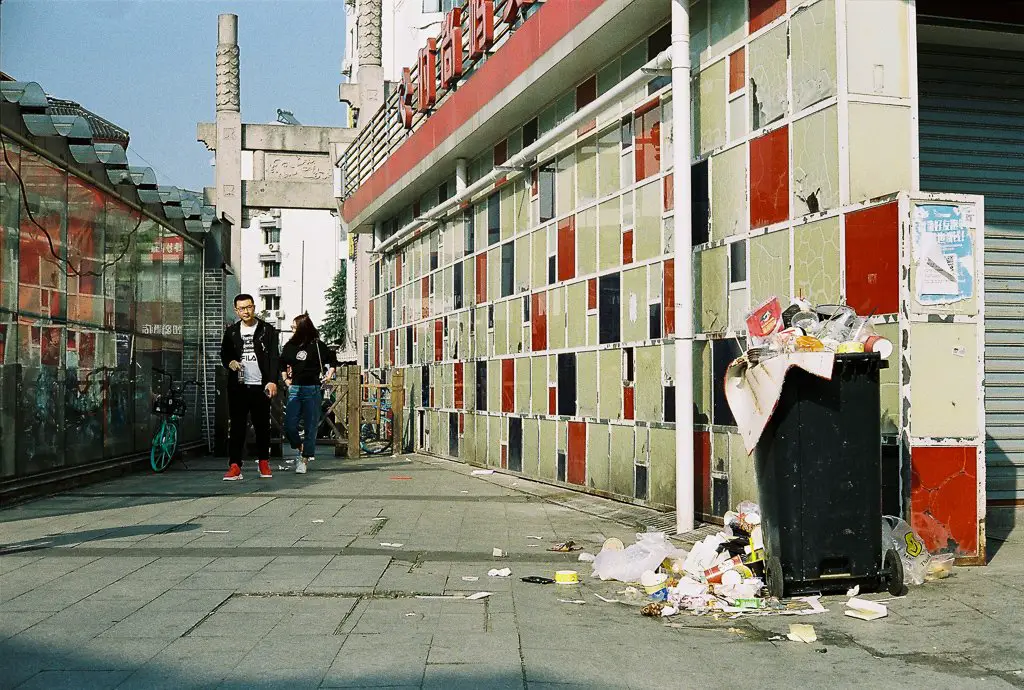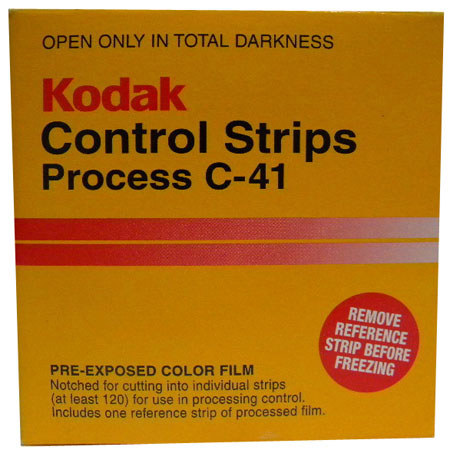

Some C-41 films, intended for scanning, do not have this orange base. These C-41 negatives appear orange when viewed directly, though the orange base is compensated for in the formulation of color print materials. Nearly all C-41 films also include an additional orange mask to offset the optical inadequacies of the dyes in the film. The resulting film is a negative, meaning that the darkest spots on the film are those areas that were brightest in the source. Due to the complexity of the film and exacting nature of the process, the results vary widely as with black-and-white negatives, the process generally results in a negative that is higher in contrast and sometimes higher in grain. Like the black-and-white film process, the C-41 process can be used to push-process films. These are not used by commercial C-41 processors, and are marketed for home or field use. There are simplified versions of the process that use a combined bleach-fix ( EDTA) that dissolves the silver generated by development and removes undeveloped silver halide. This is followed by a wash, and a final stabilizer and rinse to complete the process. After the bleach, a fixer removes the silver halide. Incorrect temperature can result in severe color shifts or significant under- or overdevelopment of the film.Īfter the developer, a bleach converts the metallic silver generated by development to silver halide, which is soluble in fixer. The control of temperature and agitation of the film in the developer is critical in obtaining consistent, accurate results. As the silver is developing, oxidized developer reacts with the dye couplers, resulting in formation of dyes. The developer develops the silver in the emulsion layers. The developing ingredient is a paraphenylene diamine-based chemical known as CD-4. The C-41 process is the same for all C-41 films, although different manufacturers' processing chemistries vary slightly.Īfter exposure, the film is developed in a "color developer". These couplers, located in the blue, green and red-sensitive layers, produce yellow, magenta and cyan dyes, respectively, when developed. There also may be layers to space different emulsions, or additional filter layers.Įach emulsion layer, in addition to the light-sensitive components, contains chemicals called dye couplers. Some films are top-coated with UV blocking layers or anti-scratch coatings.

In addition to multiple emulsion layers, real films have other layers that are not sensitive to light. Each of these layers has different speed and contrast characteristics, allowing the film to be correctly exposed over a wider range of lighting conditions. Almost all C-41 films contain multiple layers sensitive to each color. The illustrative example outlined above differs from the design of actual film, in respect to the number of layers. Beneath the blue-sensitive layer and the yellow filter are the green and red sensitive layers. This filter layer serves to remove the blue light, which would expose the layers beneath it. All silver-based photographic emulsions have some sensitivity to blue light, regardless of what other colors they may be sensitized for. Beneath the blue layer is a yellow filter, composed of dyes or colloidal silver. In the classic illustrative example, there are three emulsions: one is red sensitive, another is green sensitive, and the top is blue-sensitive. Each layer is only sensitive to a certain color of visible light. Note the antihalation layer.Ĭ-41 film consists of an acetate or polyester film base, onto which multiple emulsions are coated. This diagram illustrates the layers FujiFilm has chosen for this film.
.jpg)
Not much of a problem for negative film, but can be for transparencies.FujiColor Superia is an example of a C-41 process film. I modified my cameras to use Alkaline cells, but the discharge curve is different. Like my old Minoltas, the only problem is a battery to power the meter since Mercury batteries are not longer made. All depends on what you want in your photo as to open the lens and decrease depth of field or work with time and film speed and keep the same stop. You could double the time at 400 for a similar result with the same f-stop) and the old expired high speed film is much more susceptible to degradation than lower speed films.
KODAK C 41 FULL
I’d go at least a full stop over or set the film ISO to 125 or 160 as each film speed is about 1/3 to 1/2 stop (a generalization is 1/2 of the film speed is on stop difference.
KODAK C 41 MANUAL
I think you’ll find using old film that any manual camera or an automatic set for full manual will out perform auto as it will let you control the exposure.


 0 kommentar(er)
0 kommentar(er)
